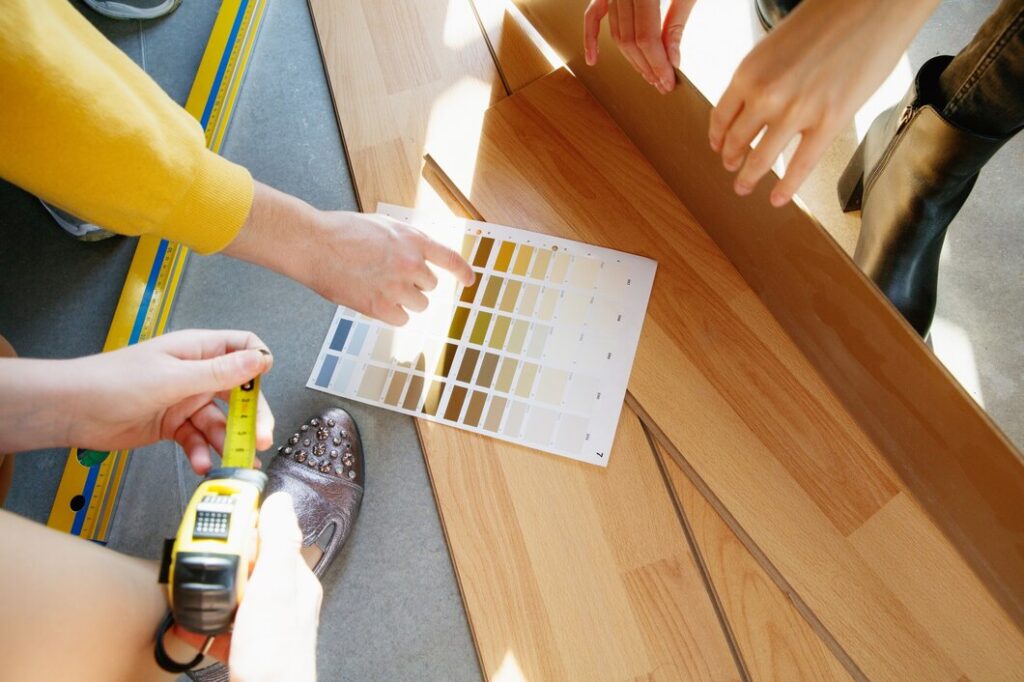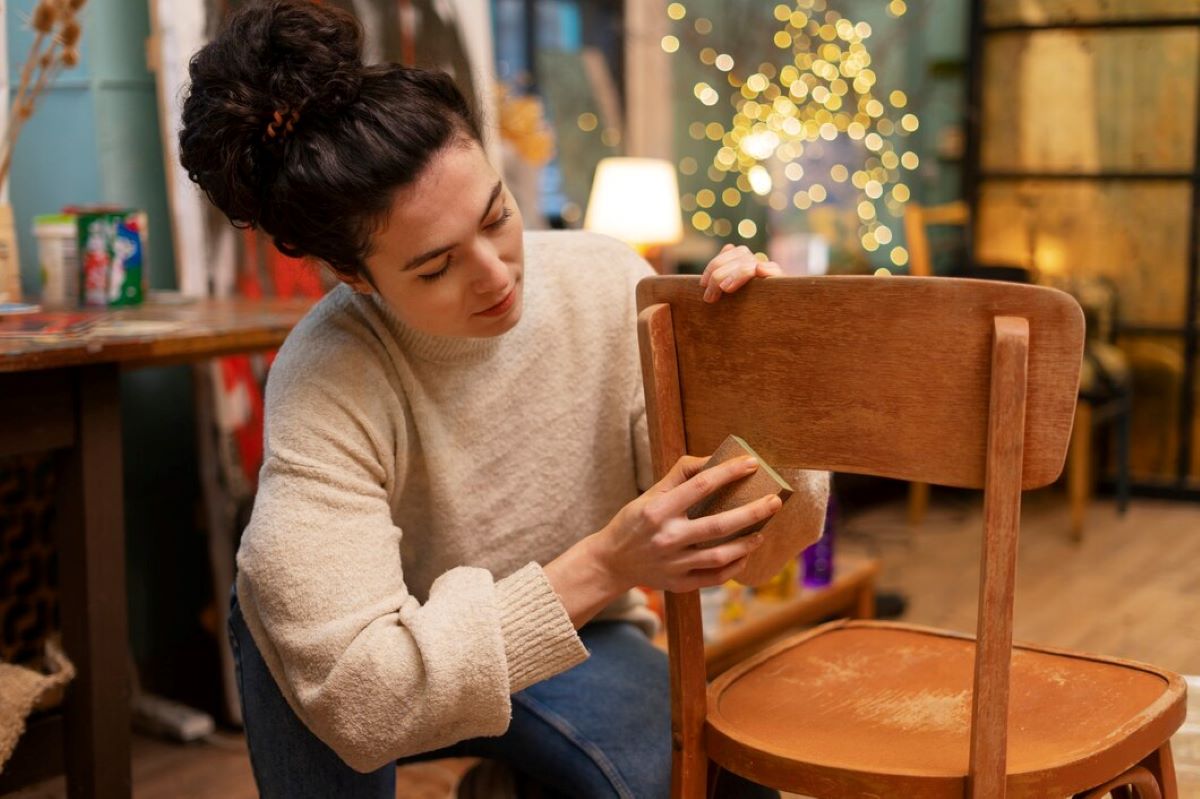Learn how to sell used furniture online for profit, with our beginner’s guide to furniture flipping
Table of Contents
Refinishing furniture is an art that combines creativity, craftsmanship, and a keen eye for detail. It’s a process that can transform old, worn-out pieces into beautiful, functional items that can fetch a good price online. This guide will walk you through the entire process of refinishing furniture and selling it online, providing tips, tricks, and unique ideas to ensure your success.
Chapter 1: Understanding the Basics of Furniture Refinishing

1.1 What is Furniture Refinishing?
Furniture refinishing involves restoring or repairing furniture to improve its appearance or functionality. This can include sanding, painting, staining, and reupholstering. The goal is to bring new life to old pieces, making them look attractive and useful again.
1.2 Tools and Materials Needed
- Sanding Equipment: Electric sander, sanding blocks, sandpaper (various grits)
- Paint and Stain: High-quality paint, primer, wood stain
- Brushes and Rollers: Various sizes for detailed work
- Protective Gear: Gloves, masks, goggles
- Miscellaneous: Wood filler, putty knife, tack cloth, drop cloths
1.3 Safety First
Refinishing furniture involves working with chemicals and tools that can be hazardous. Always work in a well-ventilated area, wear protective gear, and follow the safety instructions on products.
Chapter 2: Choosing the Right Piece
2.1 Identifying Potential
Look for furniture with good bones – solid wood pieces with minimal structural damage. Avoid items with extensive water damage, deep gouges, or missing parts that are hard to replace.
2.2 Where to Find Furniture
- Thrift Stores: Often have hidden gems at low prices.
- Garage Sales: Great for bargains.
- Online Marketplaces: Websites like Craigslist, Facebook Marketplace, and local buy/sell groups.
2.3 Evaluating Your Find
Before purchasing, ensure the piece is sturdy and all joints are secure. A quick check of the furniture’s history (if possible) can also add value to your refinished product.
Chapter 3: Preparing for Refinishing

3.1 Cleaning the Furniture
Use a gentle cleaner to remove dirt, grime, and old wax. For stubborn stains, a mixture of vinegar and water can be effective.
3.2 Repairing Damage
- Fill Gaps and Cracks: Use wood filler to repair minor damages.
- Tighten Joints: Use wood glue and clamps to secure loose joints.
- Replace Hardware: Consider replacing old hardware with new or vintage pieces for added appeal.
3.3 Sanding
Sanding is crucial for a smooth finish. Start with a coarse grit to remove old finishes and switch to a finer grit for a smooth surface. Always sand in the direction of the wood grain.
Chapter 4: Applying the Finish
4.1 Painting
- Primer: Apply a primer to help the paint adhere better and last longer.
- Paint: Use high-quality furniture paint. Apply multiple thin coats for the best result.
- Sealer: Seal the paint with a clear coat to protect the finish.
4.2 Staining
- Choose the Right Stain: Water-based stains are easier to clean up, while oil-based stains penetrate deeper.
- Application: Apply stain with a brush or cloth, following the wood grain. Wipe off excess to avoid blotching.
- Sealant: Protect the stained wood with a clear varnish or polyurethane.
4.3 Reupholstering
- Fabric Selection: Choose durable, high-quality fabric that complements the piece.
- Tools: Staple gun, upholstery foam, batting.
- Process: Remove old fabric carefully to use as a pattern for cutting new fabric. Staple the new fabric securely.
Chapter 5: Adding Unique Touches

5.1 Artistic Techniques
- Distressing: Create a vintage look by sanding edges and corners.
- Stenciling: Add patterns or designs using stencils and paint.
- Decoupage: Apply decorative paper or fabric to surfaces using decoupage medium.
5.2 Custom Hardware
Replace standard knobs and pulls with unique, artistic hardware to give the piece character.
5.3 Personalized Finishes
Offer custom finishes like monograms or custom paint colors to attract a wider audience.
Chapter 6: Photographing Your Finished Piece
6.1 Setting Up
- Background: Use a plain, uncluttered background to make the furniture stand out.
- Lighting: Natural light is best, but you can use soft, diffused artificial light if necessary.
6.2 Taking Photos
- Angles: Capture multiple angles – front, back, sides, and close-ups of details.
- Staging: Show the piece in a home setting to help buyers envision it in their space.
Chapter 7: Selling Your Furniture Online

7.1 Choosing the Right Platform
- Etsy: Great for handmade and vintage items.
- eBay: Good for reaching a large audience.
- Local Marketplaces: Craigslist, Facebook Marketplace for local buyers.
7.2 Crafting Your Listing
- Title: Use keywords that buyers might search for.
- Description: Provide detailed information about the piece, including dimensions, materials, and refinishing techniques used.
- Price: Research similar items to price competitively.
7.3 Handling Shipping and Delivery
- Packaging: Use bubble wrap and sturdy boxes to protect the piece.
- Shipping: Offer shipping options and calculate costs accurately.
- Local Delivery: Offer delivery for an additional fee if possible.
Chapter 8: Building Your Brand
8.1 Creating a Brand Identity
- Name and Logo: Choose a memorable name and design a professional logo.
- Consistency: Maintain a consistent style in your listings, social media, and website.
8.2 Marketing Your Business
- Social Media: Use platforms like Instagram, Pinterest, and Facebook to showcase your work.
- Website: Create a professional website to serve as your portfolio and online store.
- Networking: Connect with other furniture refinishers and potential customers through online communities and local events.
8.3 Providing Excellent Customer Service
- Communication: Respond promptly to inquiries.
- Quality Assurance: Ensure every piece is finished to the highest standard.
- Follow-Up: Follow up with customers to ensure satisfaction and encourage reviews.
Chapter 9: Scaling Your Business

9.1 Expanding Your Product Line
- Variety: Offer a range of styles and types of furniture.
- Customization: Provide custom refinishing services to attract more customers.
9.2 Increasing Production
- Work Space: Set up a dedicated workshop to streamline your process.
- Tools and Equipment: Invest in better tools and equipment to improve efficiency.
9.3 Hiring Help
- Assistants: Hire assistants for sanding, painting, and other tasks to increase productivity.
- Collaborations: Partner with local artisans for unique finishes and custom pieces.
Things You Should Know
Refinishing furniture and selling it online can be a rewarding and profitable venture. By following this comprehensive guide, you can turn your passion for furniture restoration into a successful business. Remember, the key to success is a combination of skill, creativity, and savvy marketing. Happy refinishing!
